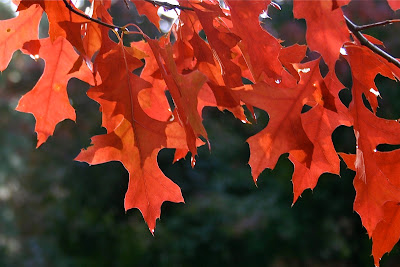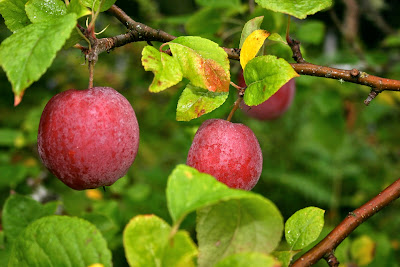Plucking a tiny, female bat from the main entrance to
Langley Library on Thanksgiving Day, Sarah Schmidt was relaxed. “I never had that fear of bats,” she explained over lunch. “My mother didn’t teach
me to be afraid. She just thought all wildlife was cool.”
Note: Schmidt is a bat biologist. She and her husband, Bill Rick, both have been immunized against rabies. No one should touch or handle a bat unless they have been trained and immunized.
 | |
| "Bat Girl," the Langley Library bat. Never touch unless vaccinated. c 2011 Bill Rick |
The Langley bat rescue was a 15-minute blip in Schmidt’s
Thanksgiving Day. Schmidt bagged the tiny
mammal in a research pouch, hung the bag in a box and put the box in the trunk of her car.
“The bat was absolutely beautiful,” said librarian, Jamie
Whitaker. “It was so tiny I thought she was a moth at first.” Whitaker dubbed it Bat
Girl and praised Schmidt and the all-volunteer organization, Bats Northwest, of
Lynnwood for responding so fast to her call for help. Knowing Schmidt lives on Whidbey, a wildlife rehabilitator with Bats Northwest asked her to follow up.
With good intentions for the bat as well as public safety, Schmidt and her husband left the bat in their parked car in Langley while they traveled with friends to dinner in Seattle. They picked up the car and the bat that evening before returning
to Coupeville. The next day Schmidt and Rick purchased meal worms,
warmed up Bat Girl, fed her and released her to the shelter of their own bat
house, where she regrouped for a time before flying away.
In hindsight, Schmidt regrets relocating the bat so far away from the library grounds. Bats are territorial and do not venture far when foraging. After consulting biologists at the Washington Department of Fish and Wildlife (WDFW), she believes she should have released the bat to a nearby tree or bat house (if available) on the library grounds. As with other protected or orphaned wildlife, if an animal is to be removed from the premises, state law requires involving a wildlife rehabber (as she did) or nuisance wildlife control operator with proper WDFW permits.
 |
| Sarah Schmidt. Photo by Dan Pedersen |
Schmidt admits most people want nothing to do with bats. They swoop erratically at dusk, often closeby, and are hard to see. Their erratic flight may be partly because they are scooping up insects with their wings and funneling them to their mouths! They use ultrasound pulses to detect flying prey and catch them in pitch darkness. The sophisticated capabilities of these tiny mammals is simply mind-boggling.
During the day they will often roost on houses, sheltering in crevices behind loose shingles or gutters. Schmidt once pulled a rolled-up
carpet from the rafters of her carport and watched a bat fall out, seemingly dead but actually hibernating. After several minutes it flew away. A sleeping bat can take some time to awaken if it has entered torpor, a condition in which the animal lowers its body temperature, heart rate and breathing rate, thus reducing its caloric needs.
Unfounded myths persist, Schmidt concedes. One of the most upsetting is the one about
bats being blind and getting tangled in people’s hair. They aren’t blind and
don’t go for the hair, though they may fly close to a person in pursuit of mosquitoes or other flying insects. Most Whidbey Islanders will never encounter a bat unless
it flies into their house through an open window or door, probably about dusk,
setting off panic and confusion.
 |
| "Bat Girl" head-on. Note her thumbs (like claws). c 2011 Bill Rick |
It is important to repeat that no one should ever touch or handle a bat unless they have been immunized against rabies. Sarah Schmidt, seen handling a bat in these photos, has been vaccinated and is a trained bat biologist.
The vast majority of bats are not infected, Schmidt
emphasizes. The suspicious behavior that sometimes triggers worries might
actually be normal for a healthy bat. On the other hand, a bat that can be approached easily by humans is more likely than others to be infected, and may bite if touched. "If you refrain from touching or handling a bat or any other wild animal, there is little chance of being bitten," Schmidt says. "Teach children never to handle any wild animal."
 |
| To "Bat Girl" this may have looked like "Bat Cave." |
The bat that caused the Thanksgiving stir in Langley had
been roosting for two days in plain sight on a south-facing wall by the library
doors. Librarians were concerned it might come to harm, especially if someone
interfered. They e-mailed Bats
Northwest for advice and Schmidt, under the guidance of a licensed wildlife rehabilitator, came to the rescue.
Roosting on an outside wall in cold weather
is not necessarily unusual for the tiny California Myotis bat, Schmidt
said. “This species will do that.
I’ve had four or five California Myotis rescues and all were just plunked on an
outside wall. The bat found a spot that was comfortable and went to sleep. She
seemed fine when she warmed up.”
Schmidt believes the library entrance, which is sheltered by a
porch roof, may have looked to the bat like an open-mouthed cave.
 |
| The locked bat cave near Deception Pass. Dan Pedersen photo |
While working for the US Forest Service in Arizona she
attended a three-day workshop on endangered, small mammals of the national
forests. Two of the three days were devoted to bats, of which 28 species live
in Arizona.
On Whidbey we have about half-a-dozen, with the Little
Brown Myotis and Big Brown Bat most common, followed by several tiny species
of myotis including the California Myotis that Schmidt rescued on Thanksgiving Day. Just across the water on Fidalgo Island another species, the Townsend’s Big-Eared Bat,
lives in an old rock-quarry cave overlooking Deception Pass. The cave is sealed
against human intruders by a locked, barred grill that allows bats to pass.
Back to Arizona . . .
“I put on a glove and they handed me this bat, a Mexican
Freetailed Bat, and I looked at its face. It was like a cross between a puppy and
a monkey.” Bats have backward-facing knees, she pointed out. “So when they walk they look like a
spider or crab. Most people have never seen a bat crawl. I became completely
captivated with this whole group of animals I knew so little about.”
 |
| The bat's four fingers support the wing. c 2011 Bill Rick |
To learn more about bats, watch for Schmidt’s popular classes
and talks or invite her to lunch as I did.
She teaches about bats from time to time at WSU Extension’s
Sound Waters University, held on the first Saturday of February, and in the
summertime at South Whidbey State Park.
I’m proud to call her a long-time friend. Together we authored Getting to the Water’s Edge for WSU
Extension in 2006. And when I wrote my own book, Whidbey Island’s Special Places, a few years later I interviewed
her for a very thoughtful chapter on Double Bluff Beach.
Schmidt explains herself well in one sentence. “I love every bug, bird, snake and
bat.”
Look for Schmidt's bat class at Sound Waters, Sat., Feb. 4th
Schmidt will teach her popular bat class Saturday, Feb. 4, at Sound Waters University, to be held at South Whidbey High School. The class list is released in December. Registration begins in early January and Schmidt's class is likely to fill fast. For additional photos and captions by Sarah Schmidt and Bill Rick, please see their images on Flickr.
What to do if you contact a bat
If you believe you have come into contact with a bat, call your local health department. Rabies vaccine is effective in preventing the disease if administered quickly after exposure to a rabid animal. The vaccination has been simplified and no longer requires a lengthy series of shots as it did in the past. Four shots are administered over two weeks, usually in the upper arm. More information: http://www.batcon.org/














































